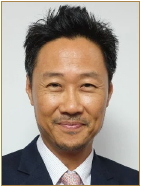Global Neurosurgery in the Time of COVID-19
Article information

In this editorial, the term global surgery includes neurosurgical care delivery as an integral component of surgical systems and the broader health systems.
While there are many stories about the impact of the coronavirus disease 2019 (COVID-19) pandemic on the delivery of surgical care and the clinical management of neurosurgical cases in high-income countries (HICs), less attention has been directed toward the impact of COVID-19 in low- and middle-income countries (LMICs). Nine-in-ten spine cases are in LMICs, and spine diseases make up 39.0% of operative cases in LMICs [1]. The pandemic will stretch the resources of the already fragile surgical systems in LMICs and thereby worsen the disparities in access to neurosurgical care. As priorities are readjusted and unprecedented resources are made available to battle the new coronavirus, we need to explore the shared interests between global surgery and pandemic response and preparedness.
THE DISPROPORTIONATE IMPACT ON THE POOR
Although pandemics have a global scope, their effects on the population are disproportionate [2]. In the case of the COVID-19 pandemic, people in the lowest socioeconomic strata might not be able to observe social distancing measures. Staying and working at home is only possible for individuals who have social protection and jobs that permit working from home. The underprivileged are, therefore, at higher risks of being infected and countries that cannot guarantee social protection to their most vulnerable citizens run the risk of an extended and a more severe pandemic [3].
COMPETITION FOR RESOURCES
While the reallocation of resources to the fight against COVID-19 is the right thing to do, it has the unintended effect of reducing the resources available to underresourced countries and underfunded diseases.
Ventilators, personal protective equipment (PPE), test reagents, and healthcare workers (HCWs) are limited but in high demand. HICs have used their financial and diplomatic resources to acquire medical equipment and HCWs at the detriment of LMICs. Some HICs have resorted to piracy and out-bidding for diagnostic tests and PPEs. Also, they have made it easier for LMIC physicians to obtain temporary work visas in HICs, in effect, poaching the health workforce [4]. These actions undermine the efforts of LMICs to mount an effective COVID-19 response.
VULNERABILITY OF THE HEALTHCARE WORKERS
HCWs in LMICs often operate at a marginal level of protection and therefore suffer significant losses [5]. The infection and death of HCWs in LMICs will impair the implementation of national COVID-19 responses and increase the workload on healthy staff. In addition, the death of health personnel will increase the burden on referral facilities and set these countries back on their health targets. Most LMICs fall short of the neurosurgical density target of 0.5 per 100,000 people, and this pandemic will subvert the efforts of LMIC governments to increase access to specialist neurosurgical providers.
IMPACT ON SURGICAL SYSTEM
In developing countries, 96.3% of all spine cases are traumatic, and the primary cause of traumatic spine injuries is road traffic accidents [1]. The burden of spine conditions can, therefore, be expected to diminish as a result of social distancing. Furthermore, elective surgeries have been put on hold to decrease the infection risk for both patients and HCWs and to create additional treatment capacity for the COVID-19 patients. In fact, the entire surgical system with its staff, space, and stuff is being repurposed for the treatment of COVID-19. In effect, surgical services become reduced to only care for the most urgent cases only thereby creating a massive backlog of elective cases and disrupting training of residents and even economic hardship.
OPPORTUNITIES
The often poorly understood elements of a surgical system, bed capacity, critical care, and ventilators, are now part of the pandemic lexicon. This, of course, came from the recognition that even the strongest health systems may be overrun by the surge of the COVID-19 patients. As mentioned in the previous section, surgical subsystems are proving to be highly valuable as a source of additional treatment capacity when needed. McKinsey estimates that as much as a 30% increase in treatment capacity could be rapidly achieved by repurposing surgical capacity [6].
There is now an effort within the global surgery community, whose main objective is to increase surgical capacity in the developing world, to advocate for surgical system strengthening as a component of pandemic preparedness strategy in the LMICs. Investment in surgical system building may be one of the “best-buys” in pandemic preparedness and global health. Building surgical beds, intensive care units, and operating theaters along with a cadre of trained personnel serves the massive unmet surgical needs of the population and, at the same time, provides immediate treatment capacity in times of a pandemic.
Many neurosurgeons may feel that they have very little to add to the COVID-19 discourse, but in the context of strengthening surgical systems in the developing world, steering some of the funds earmarked for pandemic response and preparedness into surgical capacity building can lead to a more robust neurosurgical delivery system in these countries. We should do our part as vital members of the global surgery community and offer our full support.
